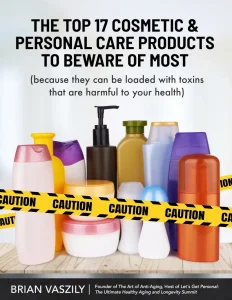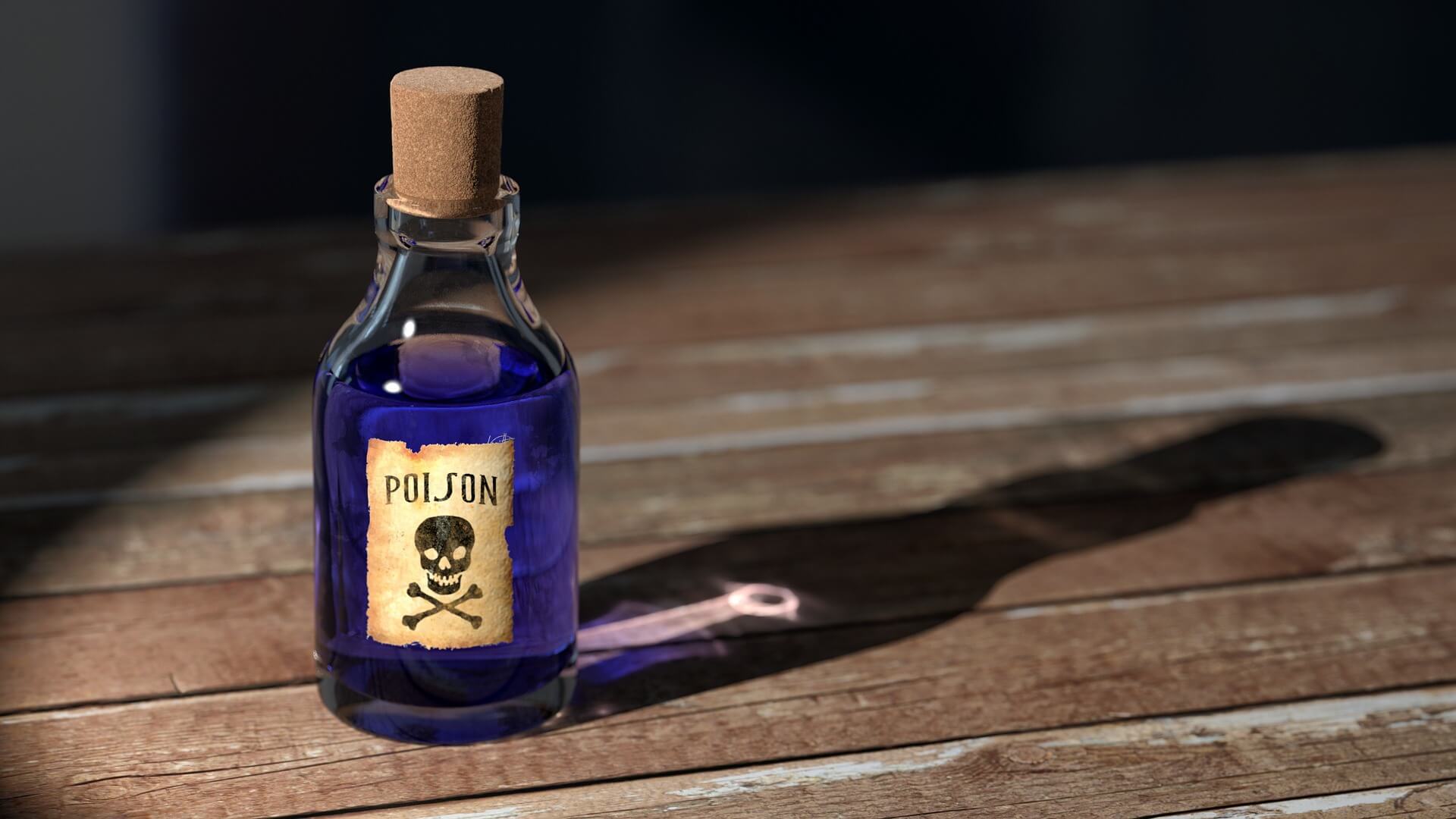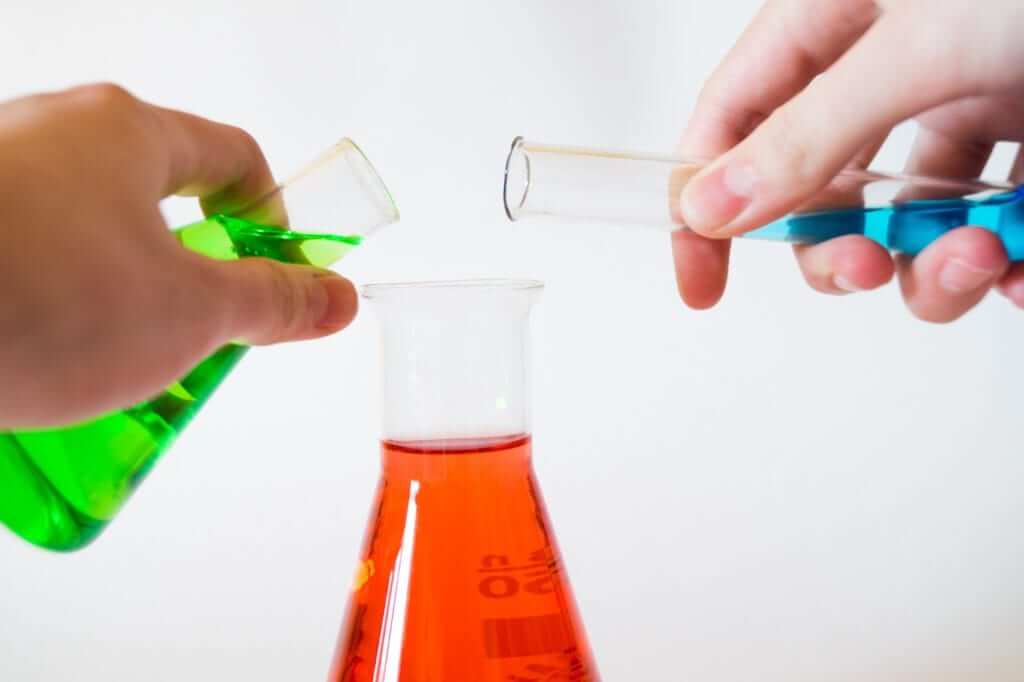Poisons in makeup are nothing new. But that doesn’t make modern-day toxic cosmetics any less dangerous than the arsenic face creams and radium glitter that our great grandmothers naively wore. The new Netflix documentary series, Broken, exposes some of the world’s most dangerous consumer products. The first on their list? Counterfeit cosmetics. Counterfeit cosmetics are one danger that makeup lovers and Instagram divas have to contend with. But deceitful mislabeling with “natural” and “organic cosmetics” is another danger that may be lurking in your makeup bag.
The makeup industry is not stringently regulated like other consumer products, like baby formula or even motor oil. Those “organic cosmetics” you’re putting on your face every morning could be nothing more than greenwashed toxins. Here’s why you should beware of “organic cosmetics” and how to shop for safe, legit makeup.
Why Toxins in Makeup are So Dangerous
The body’s largest organ, the skin, absorbs chemicals and substances from the air, water, and anything else someone puts on their body. When you ingest something orally, like a medication, the substance has to get processed through the liver before it hits the bloodstream and makes its way into the brain and other organs.
That’s why it usually takes someone at least a half-hour to feel the effects of a medication they take orally. When the liver processes a substance, it will lose some potency before it enters the bloodstream and brain. But that process of absorption is entirely different from the way the skin absorbs chemicals.
Instead, chemicals and other substances that make contact with the skin are directly absorbed into the bloodstream. Whatever gets put on the skin is going to be more potent when it enters the body and brain than if it were to get processed through the liver first. A similar process also happens when someone inhales a chemical toxin. It goes straight into the bloodstream once it hits the lungs.
So, if you were to continuously put toxic chemicals on your skin with your morning makeup routine, those contaminants aren’t weakened by going through the liver before entering the bloodstream. A cosmetic chemical poses the same, if not more, of a risk as toxic food additives.
Not only can people become exposed to toxins by putting them on their skin, but they can also be exposed by inhaling makeup powders, for example. Over time, these chemicals have been found to have the following detrimental effects on humans:
- Cancer
- Reproductive issues
- Neurological problems
- Developmental delays
- Allergic reactions
- Bacterial infections
Some of the most dangerous chemical additives and other contaminants in cosmetics that have been linked to the above health problems are:
- Arsenic
- Asbestos
- Mercury
- Cadmium
- Nickel
- Lead
- Bacteria
- Fungus
Many unsafe and mislabeled cosmetics pose a severe risk to the endocrine system. The endocrine system is responsible for regulating a host of delicate and essential bodily functions. Hormones control for so many things. For example, how many fingers and toes a person is born with, or how well their body can process carbs. Unfortunately, even minuscule doses of toxic chemicals in makeup can disrupt hormonal processes. For women, endocrine disrupters have been linked to problems with estrogen and an increased risk of breast cancer.
Toxic Chemicals in Cosmetics: Still Making Headlines Today
Every day, the average woman in the U.S. uses 12 different makeup products, containing an average of 168 ingredients. Recent tests of commonly used cosmetics and personal care products have uncovered shocking ingredients that people are putting on their skin and hair. Asbestos, a notorious carcinogen, has been found in glitter makeup marketed to children. Bacteria and other toxic ingredients have been found in moisturizers and lotions, too, as recently as 2017.
Awareness of dangerous chemicals and contaminants in makeup has been studied and documented since at least the 1970s. From 1970 to 1993, developmental issues and reproductive problems became far more widespread than in the preceding decades. The CDC found that chemicals and toxins in the environment and consumer products were strongly to blame for these issues.
Reproductive and developmental toxicants in cosmetics and personal care products were the biggest culprits. While the average cosmetic only had trace amounts of these toxins, it’s the cumulative effect of the chemicals that is so detrimental to human health.
Remember, the average U.S. woman uses at least 12 different cosmetic products every day. Let’s say that only two of those products have minuscule amounts of toxins in them. But wearing those two products at the same time, day after day exposes the wearer to the chemicals at increasing rates.
Okay, so then you can just buy organic cosmetics to avoid toxic chemicals in makeup, right? Shouldn’t something labeled “organic” be free of contaminants and toxins? Not necessarily, thanks to toxic greenwashing. To understand the origins of toxic greenwashing, we have to go back in time to 1938.
Organic Poser Cosmetics: Not the Real Thing
1938 was the last time the U.S. government attempted to regulate the cosmetics industry with the Food, Drug, and Cosmetics Act. That’s right; it’s been more than 80 years since the government established any legal protections against toxic chemicals in makeup for the average Jane citizen. Before WWII, before we put Neil Armstrong on the moon, and long before the invention of the Apple watch was the last time the cosmetics industry had to comply with legal protections for consumers. And those ancient legal protections established way back in 1938? They were a mere two pages long.
Let’s put this into perspective.
In 1938, the cosmetics industry garnered about 1 billion dollars in sales every year. In 2016, the industry had more than 169 billion dollars in sales. That’s an insane amount of money, and the Act simply couldn’t compete. The Act did not allocate any financial resources to regulating the cosmetics industry. It’s safe to say it was a paper tiger with no teeth.
Since the Act was passed, Congress has given the FDA power to regulate and ensure that the following do not pose any harm to consumers after repeated exposure:
- Pesticides
- Food additives
- Color additives
But those ingredients are a far cry from the carcinogen asbestos that’s been found in makeup in recent years. Also, in 1938, Congress didn’t give the FDA any authority to regulate chronic risk exposure from chemicals and toxins in cosmetics.
It’s really no wonder. It wasn’t until during and immediately after WWII that explosive growth took place in the chemical industry. In 1938, people didn’t have a crystal ball telling them what new and dangerous chemicals would eventually find their way into people’s cosmetics and personal care products.
So what’s happened since the Act was passed? The FDA has relied on the cosmetics industry to self-regulate in regards to the ingredients and chemicals they put in their products. Cue laugh track.
If exposure to these chemicals causes chronic health effects, which CDC research has uncovered, then how can consumers ever prove that the chemicals in cosmetics are to blame? On top of that, what incentive does the cosmetics industry juggernaut have to police themselves? The truth is, the almighty dollar is their only incentive.
First, the good news. Thanks to independent studies and research, harmful ingredients and toxins in cosmetics aren’t operating in the dark. Consumers are, for the most part, aware of these things, and they vote with their dollars.
The cosmetics industry has responded to the changes in consumer education and awareness of cosmetic toxins, too. But instead of doing the right thing and ensuring a safe product, many companies have merely greenwashed their products to capture increasing market share.
How the Cosmetics Industry Gets Away with Greenwashing
Despite the known dangers of toxic makeup products, the makeup industry continues to grow. There are many reasons why. The rise in social media influencer marketing and the rise of the middle class in developing countries are all part of the growth of the cosmetics industry. Internet sales for makeup products have grown dramatically since 2010, comprising 8.1% of the total market share in the cosmetics industry. Cosmetic imports are also increasing in the U.S.
Greenwashing is the Act of labeling a product “organic” as a way to market it to consumers who want to avoid putting poison on their skin. These organic poser cosmetics are incredibly dangerous to consumers, and mislabeling the products takes away someone’s ability to make an informed purchase for the sake of their health.
How can they get away with it? Because the FDA has no teeth to regulate these products. It’s the same problem facing the growing CBD industry. Personal care products like cosmetics and supplements like vitamins do not have to go through stringent testing and regulations like prescription drugs or even over-the-counter medications like Tylenol. Bad players in the cosmetics industry can get away with labeling their products as “organic” when they are anything but.
Informed, concerned people look at a cosmetic that says “organic” and think they are buying a safe, natural product free of toxins. Certain manufacturers of cosmetics and personal care products are playing on the term “organic” in a bid to get people to buy their poser products. Sure, several ingredients in the makeup could indeed be organic, while the rest is downright toxic.
The Top 5 Most Dangerous Chemicals in Makeup
Bad actors in the cosmetics industry can play games with the terminology and legal loopholes all they want. But an informed makeup lover can protect themselves. With knowledge and education, you can make a safe purchase and support legit makeup companies with your hard-earned money.
Before you buy that enticing shade of perhaps questionable lipstick, read the label. Look out for these top five, most common toxins in makeup and personal care products.
1. Parabens
Parabens are cheap preservatives that are put in a lot of cosmetic products. But parabens wreak havoc on the hormone estrogen and can increase breast cancer risk. They also pile up in the body over time.
2. “Fragrance”
What’s in it? No one knows. Companies are not required to disclose what chemicals they use to make up a “fragrance” in their products. But suffice it to say, it’s a secret chemical cocktail, linked to allergic reactions.
3. Phthalates
Avoid phthalates at all costs. These chemicals are well-known for causing a range of issues, including reproductive dysfunction, congenital disabilities, asthma, diabetes, and ADHD. They’re used in many products to make them more liquid, like moisturizers and skin lotions.
4. Triclosan or Microban
These chemicals are used to prevent bacterial growth. On the surface, you’d think that would be a good thing. But triclosan and microban don’t discriminate between good and bad bacteria. They may be responsible for the rise of superbugs and other dangerous illnesses.
5. Sodium Lauryl Sulfate (SLS)
SLS is a common ingredient in a range of cosmetic and personal care products. It makes soaps foam and also acts as a thickening agent. But it can be deadly thanks to the manufacturing process that is responsible for giving us SLS. Byproducts in SLS are linked to kidney and liver dysfunction.
How You Can Protect Yourself from “Organic” Cosmetics
Reading the product’s ingredient list is one way to protect yourself from toxic chemicals in makeup. Many companies will mislabel their products as “organic” or “all-natural.” But there is one label on a cosmetic product that indicates it’s truly safe and free of toxins.
If a product is labeled USDA Certified Organic, it’s not playing around. This label is not a masquerade or gimmick for foul toxins hiding underneath, taking your money while jeopardizing your health. A product labeled as USDA Certified Organic has gone through a rigorous testing process with the FDA. The label means that 95% of the product’s ingredients are truly organic, safe, and natural.
These products are free of all kinds of nasty stuff that’s found often found in inferior products. When you buy a USDA Certified Organic makeup product, then you’ve got a cosmetic that’s free of the following toxins and contaminants:
- Synthetic additives
- Hormone-disrupting pesticides and chemicals
- Fertilizers
- Allergy-causing dyes
Also, the manufacturing process that’s required to obtain this label is clean and safe. A USDA Certified Organic product isn’t made with industrial solvents and other toxic byproducts that you’ll find in greenwashed “organic” cosmetics.
“Organic” Cosmetics: A Takeaway Message
Bottom line? You can protect yourself. You can fight back despite the billion-dollar cosmetics industry unscrupulous labeling tactics. Read the label of a product before you buy it. Look over the ingredients list, and always buy a product labeled USDA Certified Organic to protect your health while looking your best.




2 thoughts on “Greenwashed Toxins: Why You Should Beware of “Organic” Cosmetics”